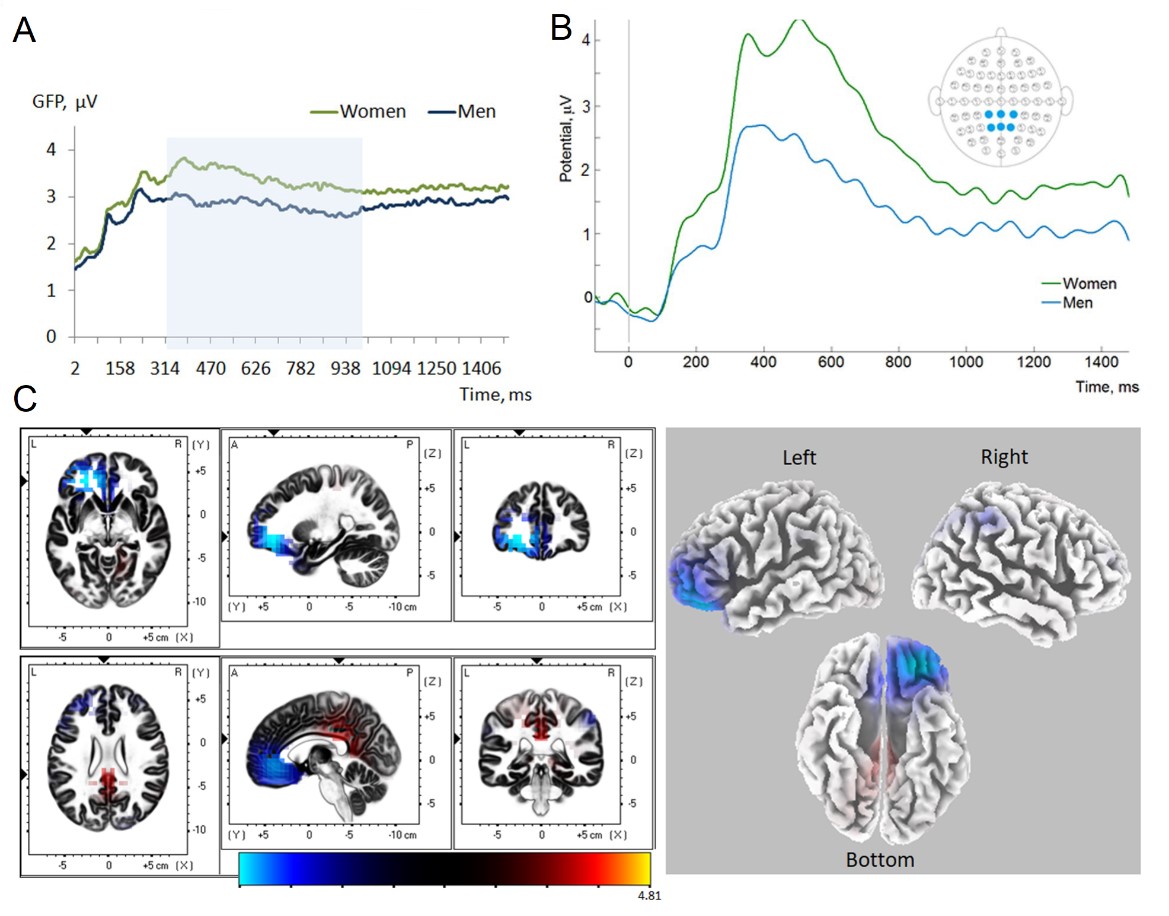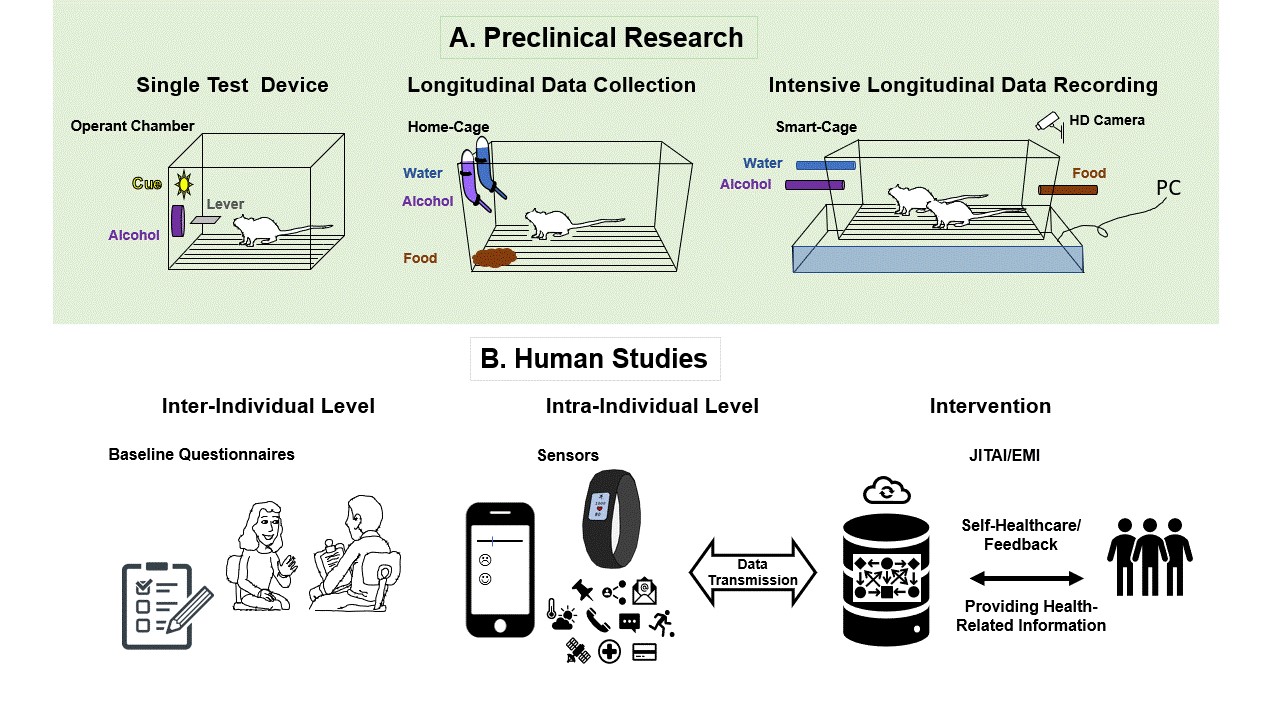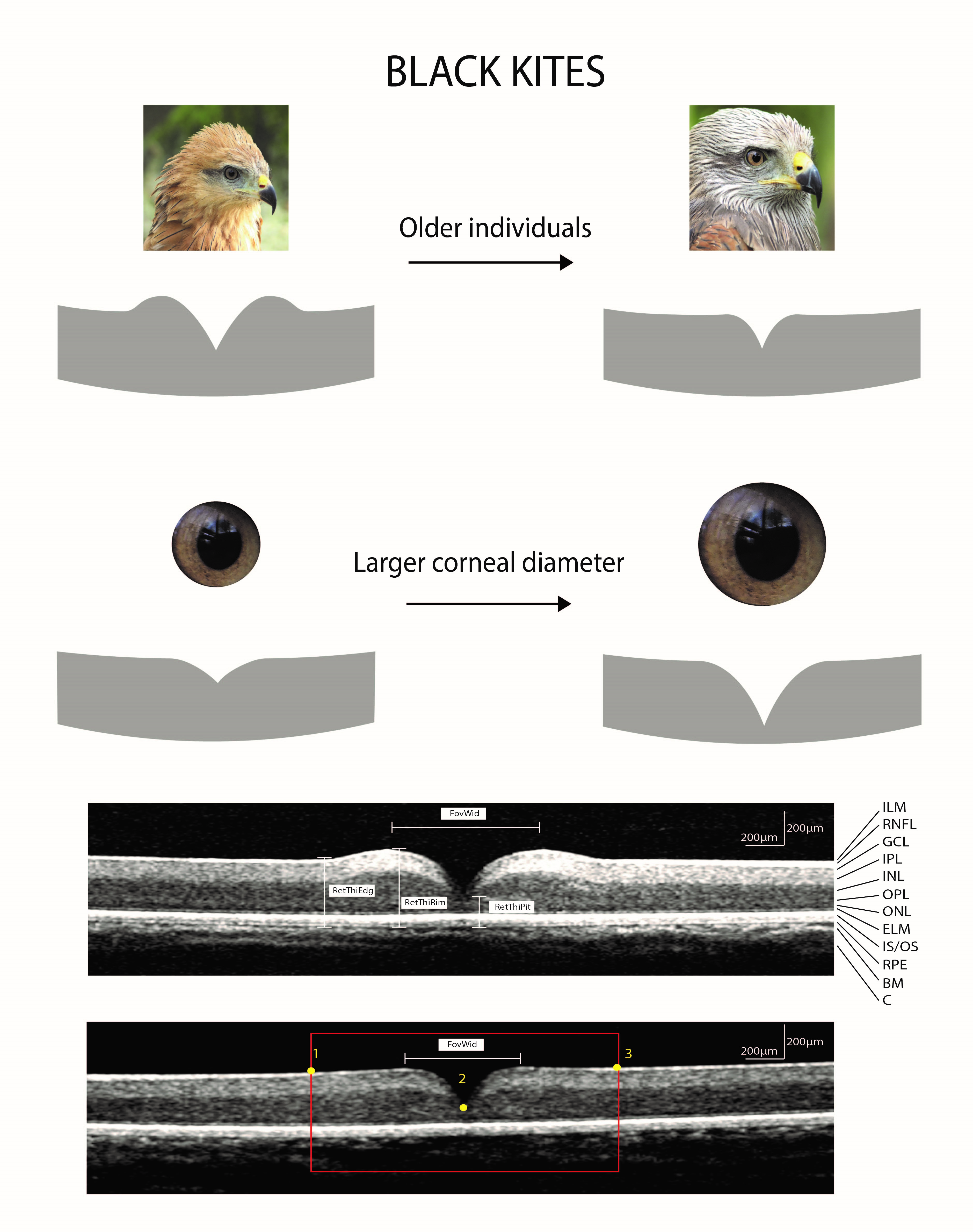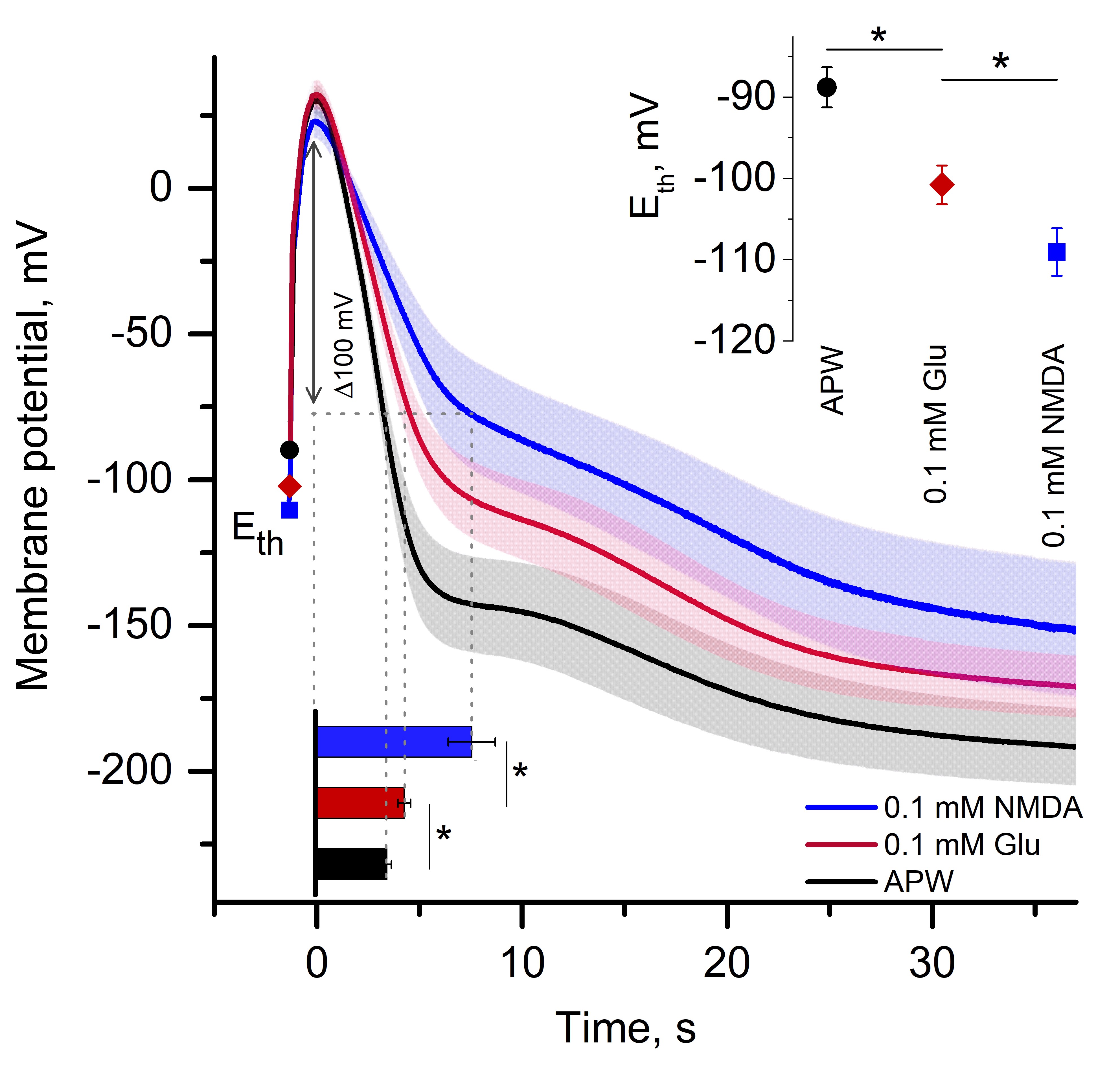 |
OSVALDAS RUKŠĖNAS Professor Head, Department of the Neurobiology and Biophysics Institute of Biosciences Email: Phone: +370 687 45546 |
 |
Neuroscience and Cellular Biophysics >>>>>
RESEARCH DESCRIPTION
The understanding of the functioning of the most complicated structure – the nervous system – in norm and pathology is one of the most challenging questions of modern science. We investigate mechanisms within the nervous system at different levels – starting with the electrophysiological properties of single neurons and excitable plant cells up to an investigation of the different brain states, the modulatory effects of sex steroids, the pathological mechanisms of depression, schizophrenia and various addictions. We employ various methods – EEG, eye tracking, in vivo and in vitro electrophysiology as well as video patch clamping.
The vast experience in the evaluation of normal and pathological traits and states at the level of electrical activity along with close collaboration with scientists from the US, Switzerland, France, Sweden, Australia, Japan emerged into several successful international projects and an introduction of certain developed approaches into clinical settings both in Lithuania and abroad. Collaboration with neuroscientists, mathematicians and biophysicists from Denmark, Poland, Japan and Lithuania in electrophysiological data analyses’ approaches resulted in an investigation of the response properties of single cells (plant cells and motoneurons), cell communication (bone marrow mesenchymal stem cells and chondrocytes, Nitellopsis obtusa cells) and signalling pathways involved in learning and memory in animal models. In cooperation with our colleagues from Switzerland, the cognitive functions and their dependence on individual hormonal concentrations are performed at the behavioural, electrophysiological and neurovascular levels.
SELECTED PUBLICATIONS
- Griksiene, R., Arnatkeviciute, A., Monciunskaite, R., Koenig, T., Ruksenas, O. Mental rotation of sequentially presented 3D figures: sex and sex hormones related differences in behavioural and ERP measures. Scientific Reports. 2019, 9(1): 18843. doi:10.1038/s41598-019-55433-y.
- Vengeliene, V., Fo, J. C., Kim, J. Translational approach to understanding momentary factors associated with alcohol consumption. British Journal of Pharmacology. 2020, 177 (17): 3878–3897. https://doi.org/10.1111/bph.15180
- Potier, S., Mitkus, M., Lisney, T. J., Pierre-François, I., Dulaurent, T., Mentek, M., Cornette, R., Schikorski, D. and Kelber, A. Inter-individual differences in foveal shape in a scaventing raptor, the black kite Milvus migrans. Sci Rep. 2020, 10: 6133. doi: 10.1038/s41598-020-63039-y.
- Lapeikaite, I., Pupkis, V., Neniskis, V., Ruksenas, O., Kisnieriene, V. Glutamate and NMDA affect cell excitability and action potential dynamics of single cell of macrophyte Nitellopsis obtusa. Functional Plant Biology. 2020, 47(12): 1032-1040. doi: 10.1071/FP20074.
Mental Rotation of Sequentially Presented 3D Figures: Sex and Sex Hormones-Related Differences in Behavioural and ERP Measures
Mental rotation of 3D objects demonstrates one of the largest sex differences. We investigated sex and sex hormones-related differences in behaviour and event related potentials (ERP) using a modified Shepard and Metzler task composed of sequentially presented 3D figures in 29 men and 32 women. We demonstrated a significant increase in response time and decrease in both accuracy and positivity of the parietal ERP with increasing angular disparity between the figures. Higher angular disparity evoked an increase of global field power (GFP) from 270 to 460 ms and different activation topographies from 470 to 583 ms with lower parietal, but higher left frontal positivity. Flatter slopes in higher angular disparity condition suggest distinct strategies being implemented depending on the difficulty of the rotation. Men performed the task more accurately than women did. Performance accuracy in women tended to be negatively related to estradiol while the response time tended to increase with increasing progesterone. There were no associations with testosterone. Women demonstrated higher GFP and an increased positivity over the parietal scalp area, while men showed higher activation in the left frontal cortex. Together these findings indicate dynamic angular disparity- and sex-related differences in the brain activity during mental rotation of 3D figures.

Translational Approach to Understanding Momentary Factors Associated with Alcohol Consumption
Multiple inter- and intra-individual factors underlie variability in drinking motives, challenging clinical translatability of animal research and limiting treatment success of substance-use related problems. Intra-individual variability refers to time-dependent continuous and discrete changes within the individual, whereas substance-use research is studied as momentary variation in the internal states (craving, stressed, anxious, impulsive, tired) and response to external triggers (stressors, drug-associated environmental cues, social encounters). These momentary stimuli have a direct impact on behavioural decisions and may be triggers and predictors of substance consumption; they also present potential targets for real-time behavioural and pharmacological interventions. In this review, we provide an overview of the studies demonstrating different momentary risk factors associated with increased probability of alcohol drinking in humans and changes in alcohol seeking and consumption in animals. The review also provides an overview of pharmacological interventions related to every individual risk factor.

Inter-individual Differences in Foveal Shape in a Scaventing Raptor, the Black Kite Milvus migrans
A fovea is a retinal region where photoreceptor densities are highest and other retinal layers are displaced. Some primates have a shallow fovea whereas many birds possess shallow or deep fovea. Although the function of the foveal shape remains unknown so far and intraspecific variation largely unstudied, we examined the eyes of 47 black kites Milvus migrans using spectral domain optical coherence tomography. We found that younger individuals had a wider fovea with a more pronounced rim and the fovea was deeper in larger eyes. No relationship between foveal shape and genetic proximity was found, suggesting that foveal shape is not a hereditary trait.

Glutamate and NMDA Affect Cell Excitability and Action Potential Dynamics of Single Cell of Macrophyte Nitellopsis obtuse
Characeaen internodal cell provides a robust model system for investigation of electrical signalling properties and the effect of neurochemical compounds in plants. Alterations of action potentials (AP) and excitation current transients upon glutamate and NMDA was studied in a single intact macrophyte Nitellopsis obtusa (Characeaen) internodal cell. Intracellular glass electrode recordings in current clamp and two-electrode voltage clamp modes were performed. Detailed analysis of the excitation parameters obtained in standard conditions for the first time revealed the correlations between separate excitation parameters in a single plant cell.
Investigation of the neurotransmitters indicate that exposure to Glutamate (Glu, 0.1–1 mM) and NMDA (0.01–1 mM) directly alters the excitability of a plant cell: increases electrically induced AP amplitude by hyperpolarizing excitation threshold potential (Eth) and prolongs AP fast repolarization phase. During excitation the amplitude of Cl- current transient, as well as its activation and inactivation durations are also increased. Both Glu and NMDA act in a dose-dependent manner, and the effect of NMDA exceeds that of Glu. Investigated ionotropic glutamate receptor inhibitors AP-5 (NMDA-type receptors) and DNQX (AMPA/Kainate-type) have no effect on Nitellopsis cell’s electrical signalling per se, yet robustly inhibit excitatory effect of NMDA.

